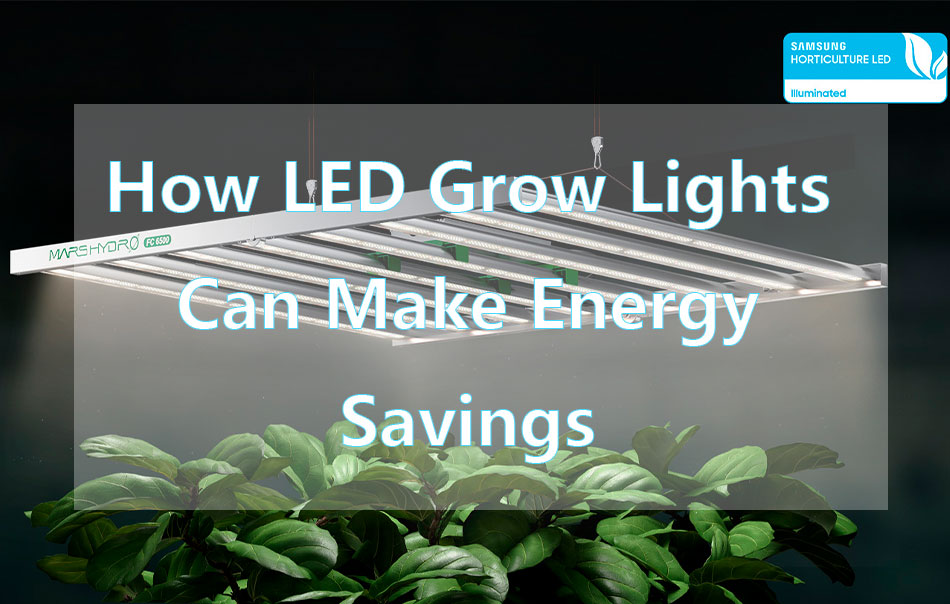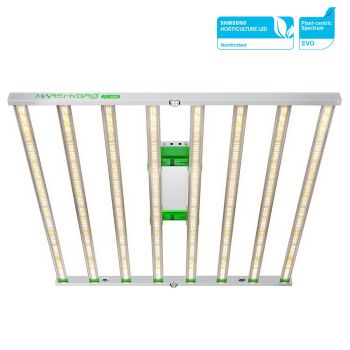
As the agricultural sector confronts rising energy costs and a deepening climate crisis, it's reaching a critical turning point. Indoor farming emerges as a viable, sustainable solution in this context, with LED grow lights playing a central role in this transformative shift.
Among these, the Mars Hydro FC series stands out in the indoor gardening world. Their growing popularity stems from their ability to offer significant energy savings and other advantages, making them a key component in sustainable and cost-efficient gardening practices.
Let's delve into the specifics of the FC series LED grow lights and their contributions to modern, eco-friendly gardening.
Enhancing Sustainability with Longevity
The exceptional longevity of LED grow lights, especially those with Samsung chips(Mars Hydro FC Series), offers significant advantages for indoor gardening. These lights have an impressive lifespan of 50,000 hours, far surpassing the 20,000-hour lifespan typical of HPS lights. This extended durability results in less frequent replacements, reducing waste and offering a more eco-friendly solution.
Samsung's contribution to this longevity is notable, with their use of high-quality materials that resist wear and degradation. Their manufacturing process is focused on precision and consistency, ensuring optimal performance of each LED chip over extended periods.
Additionally, Samsung's commitment to research and development fuels continuous innovation in chip design, further enhancing their durability and lifespan.
Reducing Heat Output
Samsung's LED chips are designed with advanced materials that efficiently conduct heat, rapidly moving it away from the chip. This is further enhanced by their use of flip-chip technology, allowing the chips to handle higher power levels and current densities while ensuring stable operation and extended longevity. The design of these chips maximizes surface area and includes features that aid in heat dissipation.
Additionally, Samsung's integration of advanced cooling solutions in their LED products ensures effective heat management. The single-bar-style design of the FC series further improves heat dissipation, crucial in maintaining a cooler environment for indoor gardens and reducing the need for additional cooling systems. This is a stark contrast to HPS lights, which generate more heat and often require specialized cooling.
By operating at cooler temperatures, Samsung's LED grow lights offer greater flexibility in placement, optimizing space and enhancing plant growth and yield while maintaining energy efficiency.
Long-term Cost Benefits
The FC series LED grow lights, though initially more expensive, prove to be a valuable investment due to their quality and efficiency.
The integration of Samsung chips in these lights enhances their durability and efficiency, leading to significant long-term cost savings. These chips are notable for their lower power consumption, which reduces energy bills. Their extended lifespan minimizes the need for frequent replacements, cutting down maintenance and replacement expenses.
Additionally, the high manufacturing standards of these chips ensure reliable performance, thereby reducing costs related to failures. Efficient heat dissipation further extends their lifespan, enhancing overall performance.
Collectively, these features make the FC series a cost-effective solution for dedicated indoor gardeners, balancing upfront costs with long-term financial benefits.
Saving on Electricity Bills
The energy efficiency of Samsung LED chips, especially in the FC series grow lights, leads to significant electricity savings when compared with traditional lighting systems. Consider this comparison:
-
Traditional High-Pressure Sodium (HPS) grow lights typically have an efficiency of about 1.7 μmol/J.
-
Samsung LED chips, like the LM301H EVO, boast a Photosynthetic Photon Efficacy (PPE) of 3.14 μmol/J.
This implies that Samsung LEDs can achieve nearly double the efficiency of HPS grow lights for the same light output, using about half the energy. For instance, a 1000-watt HPS system could be matched by a 500-watt Samsung LED system, cutting energy usage by 50%.
Note: The actual savings may vary based on specific light models, usage patterns, and operational conditions.
The efficiency and technological advancements of Samsung LED chips certainly contribute to significant energy savings in lighting applications. By providing optimal PPFD (Photosynthetic Photon Flux Density) at the lowest required brightness levels, they ensure plants get the exact light they need without unnecessary energy use. This precision in light output, combined with lower power consumption compared to traditional LEDs, results in more efficient energy use, fostering healthy plant growth while effectively reducing electricity costs.
Maximizing Efficiency in Reflective Environments
In reflective environments like Mars Hydro grow tents, the FC series LED grow lights demonstrate an increased efficiency, enhancing the PPFD (Photosynthetic Photon Flux Density) around the plants by about 25%. This boost in PPFD is crucial as it directly impacts plant growth by providing more effective light for photosynthesis.
The increase in light efficiency not only fosters healthier and potentially faster-growing plants but also contributes to energy savings. By maximizing light utilization, less energy is wasted, which translates into lower electricity consumption and costs, making it an economically and environmentally sound choice for indoor gardening.
Conclusion
The transition to LED grow lighting, particularly the FC series, marks a pivotal advancement in indoor farming. These lights offer a blend of sustainability, cost-effectiveness, and energy efficiency, making them ideal for both personal and commercial indoor gardens. Their benefits include a long lifespan, superior heat management, substantial long-term cost savings, reduced electricity bills, and improved performance in reflective settings.
This shift not only aligns with the global push towards addressing energy and environmental challenges but also paves the way for more resilient and eco-friendly agricultural practices, enhancing productivity and sustainability in gardening.











